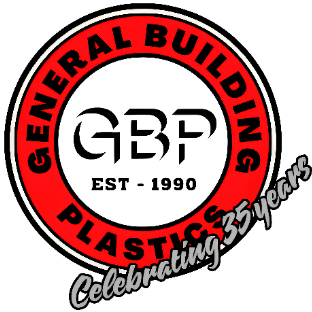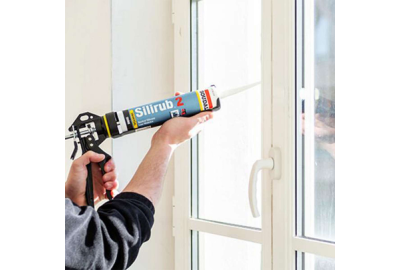Silicone Q&A - what you need to know
if you're not using silicone in your day-to-day life, it can be daunting to look at the different ranges and products that are available to you - and even if you are, it never hurts to have a reminder as to what everything means. So, we've put together a small guide with some common questions we're asked, as well as what to look out for when you're purchasing silicone sealants.
What is silicone sealant?
Silicone sealant is a liquid semi-viscous material that can be applied to gaps in various home improvement contexts. As the name implies, it's designed to keep foreign objects, air, dust, water, smoke and more into small gaps, whether coming from the inside to the outside or vice versa. Common applications around the home include sinks, counters, and walls; anything that requires a tight seal to prevent ingress.
What does “LMN” mean?
LMN stands for low modulus neutral, which means “more elastic” (low modulus) and neutral is how it cures – read below for more on neutral and acetoxy silicones.
LMN does not describe the quality of the product, an indicator of how the product was made or represent a single product on the market. For example, Soudal Silirub and DL Chemicals’ Parasilico are both classed as LMN, even though they perform differently.
Why should you use silicone?
It's the most widely known sealant type, so there's a lot of information available out there about what you can use it for, as well as for each individual sealant. There's no shrinkage when curing, and it has excellent resistance against UV, weather, aging and changes in temperature.
When should you not use silicone?
Silicones are not ideal for use as an adhesive, especially on wet substrates. They can't be painted over, and they carry a risk of staining natural stone or porous substrates.
Do I need to prepare the surface area before using silicone sealant?
The surface area should be cleaned, dry and free of anything that could be classed as a "loose material" (i.e. dust, rubble, dirt, rust - essentially anything that should not be there)
Can I cover old silicone with new silicone?
We would advise not to - if an area needs a new application of silicone, there's a good chance the old one needs replacing, and a new covering would simply mask the problem. Cut away old silicone sealant with a utility knife or chisel before re-applying.
Does silicone expire?
Silicone does come with a "use by" date, however there is a simple check - squeeze a small bead of silicone onto a suitable surface and if it doesn't cure (a.k.a. completely dry), then the silicone isn't usable and should be disposed of.
CE Markings
CE markings show:
• Product capabilities and offers a way of comparing products using standard tests
• Incorporates testing for use in facades, glazing, sanitary and flooring applications
• Classifies products according to external/internal use, properties in cold environments, movement accommodation (as a %), elastic properties (low/high modulus, plastic or elastic)
EN 15651 is the industry standard for classifying silicone, and has four parts which are associated with the application(s) and performance characteristic(s) of the product. The highest achievable claim can be a combination of multiple application domains.
EN 15651-1: Sealants for facade elements
• Construction substrates e.g. concrete, aluminium
EN 15651-2: Sealants for glazing
• Glazing substrates - glass
EN 15651-3: Sealants for sanitary joints
• Substrates in a sanitary environment (i.e. with conditions that support mould growth)
EN 15651-4: Sealants for pedestrian walkways
• Substrates which are going to be subject to traffic i.e. flooring joints
Neutral vs Acetoxy Silicones
You should also make a note of what kind of silicone you're using - either neutral or acetoxy. The key difference at first glance is that acetoxy silicones emit acetic acid and have a strong vinegar smell during the curing process, while neutral silicones can often emit a sweet smell; otherwise they're odourless. However, their capabilities also differ:
Neutral silicones typically are weak elastic and low modulus, making them suitable for expansion joints. They offer good adhesion on PVCu, glass, aluminium and concrete. All Soudal silicones available at GBP are neutral.
Acetoxy silicones give good adhesion on glass and aluminium, with a faster curing time than neutral; however, their adhesion to concrete, uPVC and other synthetic materials is inconsistent, and it can’t be used at all on lead and copper.
Other things to consider:
A higher cost provides a higher-quality product; i.e. Soudal SIlirub 2 offers a higher movement capacity than Silirub N – they both do the same thing but the more expensive one does it with more consistency and reliability
The relevant technical data sheet should be read before using; we have one on each of our silicone product pages
Always check the CE markings to see what your chosen silicone can do, how much elasticity it has, what warning symbols it has and what it specifically says it can and cannot be used for
Consider using a primer on any particularly hard-to-bond surfaces, and if possible, use pressure to ensure the bonding process works between the two materials for as long as possible
Glossary:
Body: The resistance of a product which it is being applied and tooled
Density: Measure of mass per unit of volume
Filler: Added to a product to produce a thicker body
Modulus: A measurement of how much force is required to stretch a standard sample size of the product by 100%
i.e. low modulus – higher movement accomodation – better for sealant applications
Skin formation time: How long it takes a “skin” or coat to form on the surface to prevent dust and dirt
Shrinkage: Loss of volume in a sealant as it cures
Tooling time: The time between applying the sealant and when it dries, so you can manipulate it to your needs







